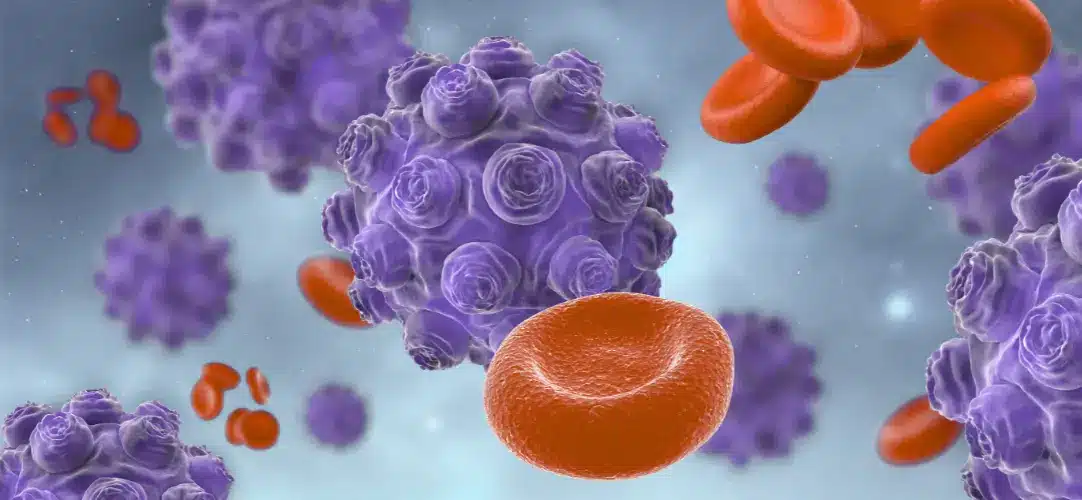
Australia has recently witnessed a concerning outbreak of measles, a disease that many people today may not remember in its full severity. While the introduction of the measles vaccine in the 1960s led to a dramatic decline in the disease, outbreaks are still possible, especially when vaccination rates drop.
The recent cases in Australia serve as a stark reminder of the critical importance of maintaining high vaccination rates to protect public health.
Many of us are not old enough to remember the devastating toll measles took before vaccines became widely available.
Professor Joshua Davis, Senior Staff Specialist in Infectious Disease at Newcastle’s John Hunter Hospital, and Deputy Director of HMRI’s Infection Research Program, emphasises that before the widespread rollout of the measles vaccine, an estimated 1 million people, predominantly young children, died each year due to measles globally.

“This illness can be unpredictable, for many, it causes a fever and rash and clears up quickly, but in some cases, it can lead to serious complications like brain inflammation, pneumonia, pregnancy loss, or severe bacterial and secondary infections. These risks are especially concerning for young children and people with weakened immune systems,” says Professor Davis.
One of the main reasons measles is so concerning is its extreme contagiousness. It is, in fact, the most contagious infectious disease known to infect humans.
Professor Davis says that “The disease has an R0 (reproductive rate) that can reach up to 18, meaning that in an unvaccinated population, an individual with measles will infect, on average, 18 others. These 18 individuals will, in turn, each spread the disease to another 18, resulting in an exponential rise in cases.”
Fortunately, vaccination helps to control this. The measles vaccine is incredibly safe and effective, and when a population is highly vaccinated, the effective reproductive rate (Reff) approaches zero, meaning that the disease has little chance of spreading. However, as vaccination rates decline, the Reff increases, and outbreaks become more likely.
We are currently seeing the consequences of declining vaccination uptake in certain regions. In the United States, for example, according to the Center for Disease Control and Prevention (CDC), several states are experiencing active measles outbreaks due to decreasing vaccination coverage.
This drop in vaccination rates is a critical issue, as it has the potential to not only fuel outbreaks within local communities but also to spread across borders, including to countries like Australia. Given how easily measles can spread, it is clear that maintaining high vaccination coverage is essential for preventing outbreaks.
According to Professor Davis, one of the most significant factors in ensuring continued vaccination efforts is the safety and effectiveness of the measles vaccine. “Extensive research has consistently shown that the measles vaccine is extremely safe,” Professor Davis explains, “with side effects typically limited to mild symptoms such as a sore arm, low-grade fever, or a transient rash.”
Professor Davis adds that it’s critical to recognise that “the risks associated with the vaccine are far less severe than the consequences of contracting measles, which can lead to long-term health issues or even death.”
A key factor in declining vaccination uptake is the public’s mistrust of the MMR (measles, mumps, rubella) vaccine, largely fueled by misinformation linking it to autism. This belief originated from a 1998 study by Andrew Wakefield which subsequently was shown to be based on fabricated data and withdrawn (The BMJ (2011). Several subsequent studies have found no credible evidence of a link between the MMR vaccine and autism. These findings have reinforced the vaccine’s safety and its vital role in preventing serious diseases.
The measles vaccine is very safe, and previous research linking measles vaccines to autism have been shown to be fraudulent. Like all vaccines it has side effects (most people get no or mild side effects. Some get a sore arm, a low-grade fever, or even a transient rash).

Australia’s success in eliminating local transmission of measles by the late 20th century, officially confirmed in 2014, was a monumental achievement. However, cases still occur sporadically, often as a result of international travel.
Professor Davis says that “While Australia has made significant progress in controlling measles, it remains crucial to maintain high vaccination rates to prevent the reintroduction of the disease”.
The recent outbreaks in Australia, which have been traced to imported cases, highlight the vulnerability of a population that may have become complacent. The importance of ongoing vaccination programs cannot be overstated, as maintaining herd immunity is vital for protecting those who cannot be vaccinated, such as infants, pregnant women, and individuals with compromised immune systems.
The recent measles outbreaks in Australia serve as an urgent reminder of the need to uphold high vaccination rates. Measles is a highly contagious and potentially deadly disease, and vaccination remains our best defence. By maintaining a high vaccination rate, we not only protect individuals from the risks of measles but also help safeguard our communities from the threat of a more serious outbreak.
Measles is a viral illness, caused by the measles virus (genus Morbillivirus).
It is an airborne disease which can spread when an infected person breathes, coughs, sneezes or talks.
Source: Health Direct
HMRI would like to acknowledge the Traditional Custodians of the land on which we work and live, the Awabakal and Worimi peoples, and pay our respects to Elders past and present. We recognise and respect their cultural heritage and beliefs and their continued connection to their land.
Hunter Medical Research Institute
We’re taking healthy further.
Locked Bag 1000
New Lambton
NSW, Australia, 2305


This site is protected by reCAPTCHA and the Google Privacy Policy and Terms of Service apply.
Copyright © 2024 Hunter Medical Research Institute | ABN: 27 081 436 919
Site by Marlin Communications
